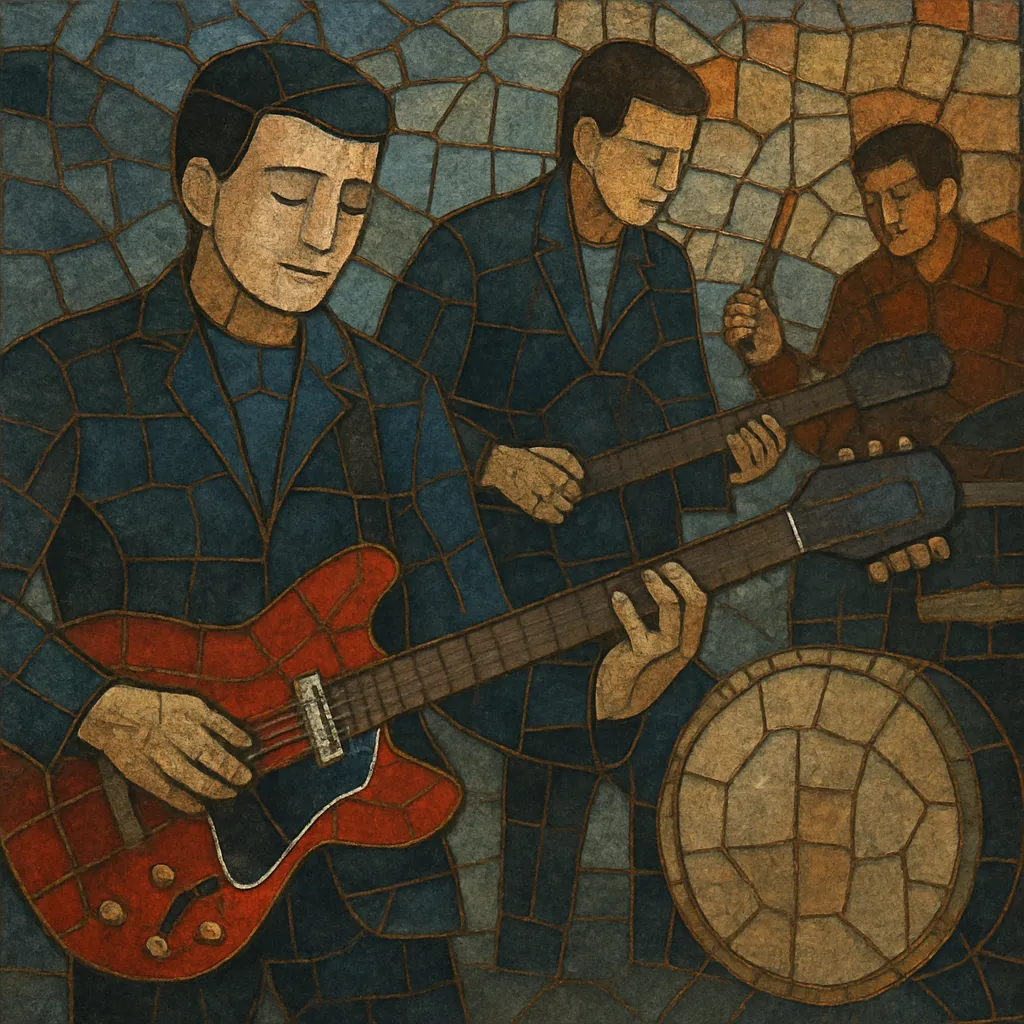Rautalanka is a Finnish style of clean, melodic instrumental guitar music that emerged in the early 1960s. The name literally means “iron wire,” a nod to the guitar strings and the bright, wire‑like tone.
The sound is characterized by a singing lead guitar playing memorable, often minor‑key melodies with tape echo and spring reverb, supported by rhythm guitar, bass, and drums. It draws heavily on The Shadows–style instrumental rock and adapts Finnish folk, tango, and schlager melodies into twangy, danceable arrangements.
Compared with surf, rautalanka is typically less aggressive and more melancholic, emphasizing lyrical phrasing, neat counter‑melodies, and a polished, sentimental atmosphere.
Rautalanka took shape in Finland at the dawn of the 1960s when local groups adopted the crisp, echoing instrumental approach popularized by British acts like The Shadows and American instrumental rock and surf bands. Finnish musicians applied this sound to local repertoire, arranging folk tunes, tangos, and schlager hits for lead guitar. The breakthrough moment is often associated with The Sounds’ 1963 hit "Emma," which became an iconic template for the style: clean guitar, strong melody, tasteful echo, and a touch of Nordic melancholy.
Typical ensembles featured lead guitar (often a Fender Stratocaster) into a Vox or Fender amp with tape echo and spring reverb, plus rhythm guitar, electric bass, and drums. Melodies in natural or harmonic minor, elegant counter‑lines, and restrained vibrato created a reflective mood distinct from the more percussive drive of surf rock. Through the mid‑1960s, rautalanka bands proliferated, and the sound became a staple at dances and on television, intertwining with Finland’s iskelmä (schlager) and tango traditions.
While vocal beat music and later rock trends reduced the style’s mainstream presence by the late 1960s, rautalanka never vanished. From the late 1970s into the 1980s, groups like Agents helped renew interest, preserving the classic tone while integrating it into contemporary Finnish pop and rock. Subsequent decades saw periodic revivals, specialty festivals, and new bands keeping the tradition alive, cementing rautalanka as a uniquely Finnish branch of instrumental guitar music with a lasting influence on Finnish rock and pop aesthetics.


